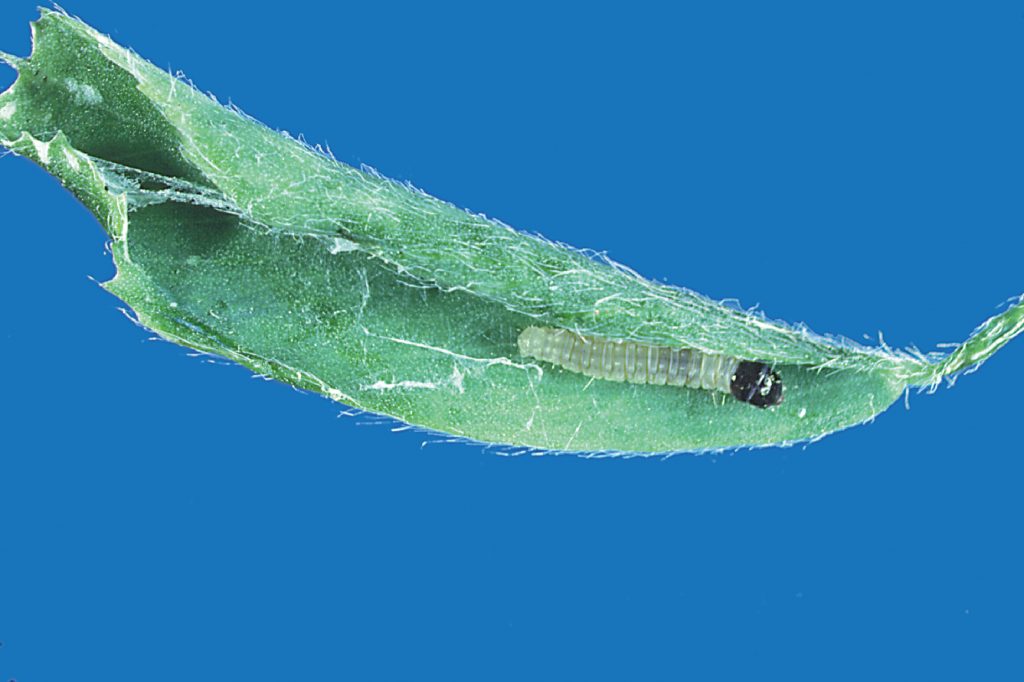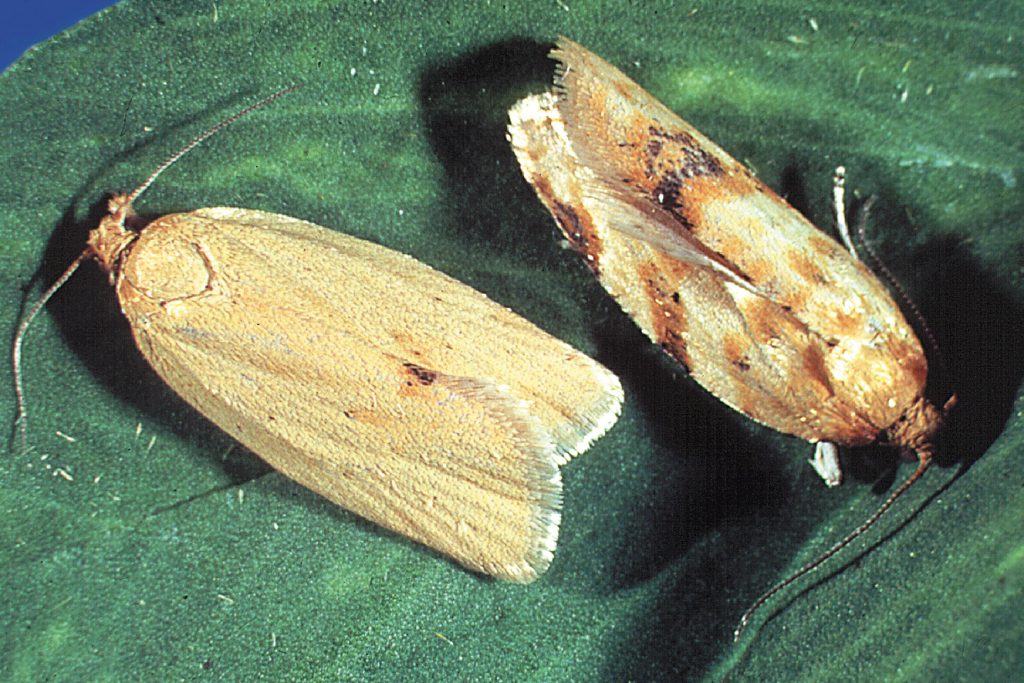This pest has had a serious impact on a lucerne stand in northern Victoria
Where have they been reported?
A 6-year stand of lucerne north of Elmore in Victoria’s Northern Country was severely damaged by caterpillars webbing together and eating out the growth tips of most plants. Large numbers of caterpillars were found suspended on threads from the wilted growth tips. When disturbed, the caterpillars wiggled frenetically in a similar manner to that of diamondback moth larvae. It is very likely that these caterpillars were lucerne leafroller (Merophyas divulsana).
About this pest
While this pest is a major problem in lucerne, the lucerne leafroller can cause damage to a range of other legumes, including clover and soybeans. The impact of this pest is generally restricted to the summer and autumn period.
Caterpillars are yellowish-green to green with distinctively darker coloured heads, and grow up to 15 mm long. The larvae bind leaves together at the growing tips of plant stems. Several leaves are bent over and joined with silk to form a shelter. Caterpillars often drop from plants on silken threads when disturbed.
Adult moths are 8 mm long and are yellow-light brown in colour, often with dark irregular markings on the forewings.
Feeding damage is most evident when the plants are nearing flowering. Crops that are cut or grazed in spring, summer and autumn are also at risk. Caterpillars feed on the terminal leaves and flowering stems. Heavily infested plants become stunted; both yield and quality of hay can be significantly reduced. Damage is often most severe in moisture stressed and dryland crops.


Our advice
To monitor lucerne leafrollers estimate the number of stems on which re-growth terminals are rolled. As a guide, spraying is thought to be worthwhile in grazing or hay stands when about 30% of the terminals are rolled in the first half of re-growth. However, it is generally not necessary to spray for lucerne leafroller unless seed production is threatened.
Early cutting or grazing is often preferred as a way of reducing the economic damage caused by lucerne leafrollers; populations can be kept in check with harvesting on a 3-5 week rotation. In the warmer months, maintaining optimum soil moisture levels can also help prevent economic damage, but is only possible in areas under irrigation.
Acknowledgements
Source of field reports of lucerne leafrollers
Greg Toomey – Agronomist, Landmark (Victorian Northern Country)
Cover image: Photo by D Ironside, QDAFF





